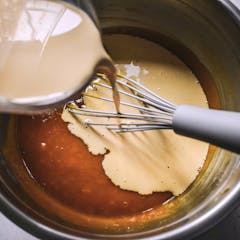
University of Southern Queensland

The University of Southern Queensland is dedicated to providing quality programs and degrees in a flexible and supportive environment. In just over 50 years, it has become a prominent teaching and research institution providing education worldwide from three regional locations – Toowoomba, Springfield and Ipswich.
Links
Displaying 1 - 20 of 414 articles

Films about Australia’s efforts in WWI continue to exclude an Aboriginal presence – denying all of us access to their important stories.

If you look carefully at the night sky, you may spot this fuzzy visitor with the naked eye – but binoculars will help.

Students with disability are experts in themselves and their needs. But we found they are often not consulted by their teachers about what helps them at school.

A national anthem is supposed to reinforce a nation’s identity. Are we fine with singing Advance Australia Fair for another 50 years?

Winnie Dunn has made it her project to bring a more sensitive intercultural understanding to an unfamiliar readership

Our experts have a roundup featuring everything from a saucy period drama, to the latest season of Blown Away, to a Stan production that brought Superstore’s Ben Feldman down under.

Australian jurisdictions are making strides to ensure consent means an active ‘yes’ rather than the absence of a ‘no’. But without better knowledge of these laws, they risk being just words on paper.

In the 19th century, the world ran on steam. In the 21st century, little has changed. Every thermal power plant still relies on steam as a final stage.

Stan’s new comedy-crime series is loosely inspired by the mysterious disappearance of Paddy Moriarty from the tiny town of Larrimah, Northern Territory.

Electric vehicles have long come at a premium. But as cheaper models arrive, outer suburban residents are taking to EVs to save on petrol

Next week, Australian schools will begin NAPLAN tests for students in years 3, 5, 7 and 9.

In a pinch, the water from a can of beans can replace eggs. But how does that work, exactly?

Researchers, managers and Traditional Owners are joining forces to understand and combat climate threats to Australia’s many unique World Heritage sites.

The Australian War memorial recently announced it will extend its exhibition to recognise the Frontier Wars, where Aboriginal resistance fighters fought in retaliation to massacres and other attacks.

Glynis Johns, most famous for her role as the suffragette mother Mrs Winifred Banks in Disney’s Mary Poppins (1964), passed away last week at the age of 100.

Official investigations of suspected Nazi collaborators have long closed. But families are still grappling with the hidden secrets of loved ones, a new book details.

In 2024 we will see meteor showers, Saturn disappearing behind the Moon, and – if we’re lucky – a comet bright enough to see with the naked eye.

People have been looking up at the stars for thousands of years. Here’s where to start if you want to learn more about the night sky – from spotting easy-to-find constellations to using the best apps.

Is That You, Ruthie? is a harrowing account of a mother and daughter’s attempt to repair their fractured relationship.

The Geminids meteor shower this year promises to be extra special as the peak of the falls at New Moon.
